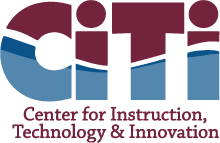Culinary Arts
-
Working as a chef, cook or food-preparation worker involves the ability to work as an efficient team member. While applying classroom theory in an industrial kitchen, students will learn food preparation and cooking methods, food-handling techniques and sanitation procedures. This course provides students with a solid foundation for further career training programs and/or employment.
About this program:
- Successful Student Attributes: Ability to multitask, has good personal hygiene, ability to work in a fast-paced
environment, makes safe decisions, works well in a team, understands basic science concepts as related to food prep, handling and cooking, physical requirements as required by industry: standing for long periods of time, lifting 50 lbs - Career Opportunities: Sous Chef, Food Critic, or Baker Assistant
- Program Length: Two years
- Industry Alignment: ProStart; ServSafe; New York State Restaurant Association Education Foundation; National
Restaurant Association Education Foundation - Integrated Academic Coursework: Career and Financial Management (½ credit); Science (½ credit per year)
- Graduation Pathways: 4+1 Pathway Option: National Restaurant Association Educational Foundation: ProStart
Level 1 and 2 Written Exam, Qualters Practical Assessment,CDOS Pathway
Opportunities through this program:
- College Credit Opportunities: Dual Credit: Cayuga Community College CULA 100 Food Safety and Sanitation
(2 credits); CULA 101 Culinary Methods and Techniques I (4 credits); CULA 102 Culinary Methods and Techniques II (4 credits); BIOL 209 Basic Nutrition (3 credits); Articulation Agreements: SUNY Cobleskill; Schenectady County
Community College; Bryant & Stratton College; SUNY Morrisville; SUNY Delhi; Tompkins Cortland Community College; Niagara Falls Culinary Institute; The Culinary Institute of New York at Monroe College; All ProStart
articulation locations - Credential Opportunities: ProStart – Level 1 and 2; ProStart Certificate of Achievement; ServSafe Manager
Level Certification; ServSafe Food Handler Certification; Technical Endorsement on Graduation Diploma; CPR
Certificate - Program Achievement Opportunities: Technical Endorsement on Graduation Diploma, National Technical Honor Society
- Industry Assessments: ProStart – Levels 1 and 2; Qualters Practical Exam
Supplies/Samples:
- Program Supplies, Materials, Assessments Provided: Chef hats; aprons; uniforms; shoes; ServSafe Certifications; ProStart Exam Levels 1 & 2; Qualters Food Handler Practical
- Entry-level Occupational Reading Materials Lexile:1230-1260, (https://ttac.gmu.edu/archive/telegram/article-1)
- 9th Grade Reading Level Sample Text: The three general types of cooking methods are dry-heat cooking, moist-heat cooking, and combination cooking. Each method can be used to bring out the flavor and tenderness of specific dishes. In addition, these methods can reflect cultural and regional preferences. Heat is a type of energy. When two items of different temperatures have contact, energy in the form of heat transfers from the warmer item to the cooler until they both reach the same temperature. Heat travels in items in three ways: conduction, convection, and radiation. Conduction is the transfer of heat from one item to another when the items come into direct contact with each other. Sometimes the heat is transferred to the air or from surface to surface. An example is when a cold plate begins to warm when covered with hot food. The heat of the food is conducted into the surface of the plate. (Foundations of Restaurant Management & Culinary Arts, Year 1 textbook)
- Sample Vocabulary: Braising, caramelization, cross-contamination, conversion factor
- Sample Science Question: Think about steaming a piece of chicken in your favorite soup recipe. Now think about a piece of grilled chicken with perfect crosshatching. Why are the flavors so different? Research the Maillard reaction and then cook two chicken breasts, one by a dry-heat method and one by a moist-heat method? What do you notice? What conclusions can you make?
- Successful Student Attributes: Ability to multitask, has good personal hygiene, ability to work in a fast-paced







